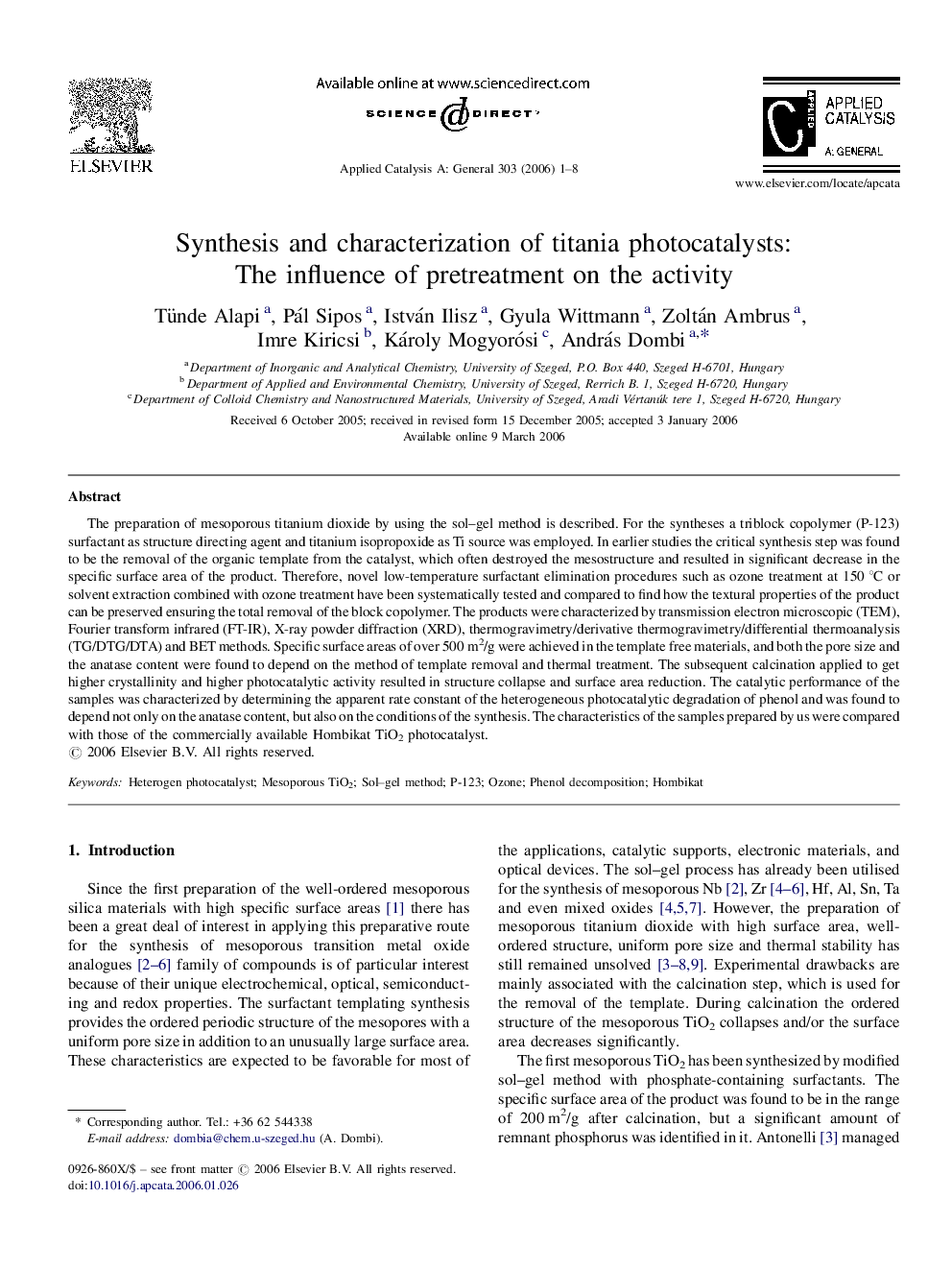| Article ID | Journal | Published Year | Pages | File Type |
|---|---|---|---|---|
| 44524 | Applied Catalysis A: General | 2006 | 8 Pages |
The preparation of mesoporous titanium dioxide by using the sol–gel method is described. For the syntheses a triblock copolymer (P-123) surfactant as structure directing agent and titanium isopropoxide as Ti source was employed. In earlier studies the critical synthesis step was found to be the removal of the organic template from the catalyst, which often destroyed the mesostructure and resulted in significant decrease in the specific surface area of the product. Therefore, novel low-temperature surfactant elimination procedures such as ozone treatment at 150 °C or solvent extraction combined with ozone treatment have been systematically tested and compared to find how the textural properties of the product can be preserved ensuring the total removal of the block copolymer. The products were characterized by transmission electron microscopic (TEM), Fourier transform infrared (FT-IR), X-ray powder diffraction (XRD), thermogravimetry/derivative thermogravimetry/differential thermoanalysis (TG/DTG/DTA) and BET methods. Specific surface areas of over 500 m2/g were achieved in the template free materials, and both the pore size and the anatase content were found to depend on the method of template removal and thermal treatment. The subsequent calcination applied to get higher crystallinity and higher photocatalytic activity resulted in structure collapse and surface area reduction. The catalytic performance of the samples was characterized by determining the apparent rate constant of the heterogeneous photocatalytic degradation of phenol and was found to depend not only on the anatase content, but also on the conditions of the synthesis. The characteristics of the samples prepared by us were compared with those of the commercially available Hombikat TiO2 photocatalyst.
